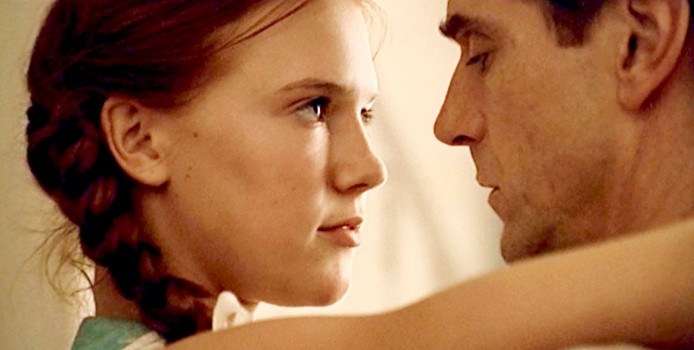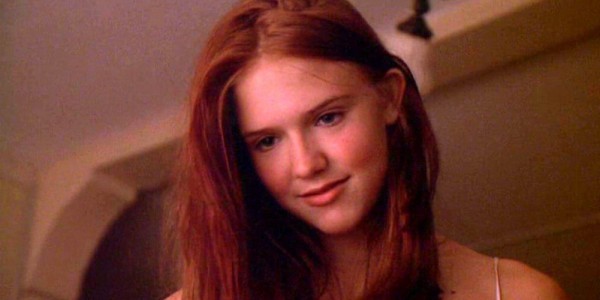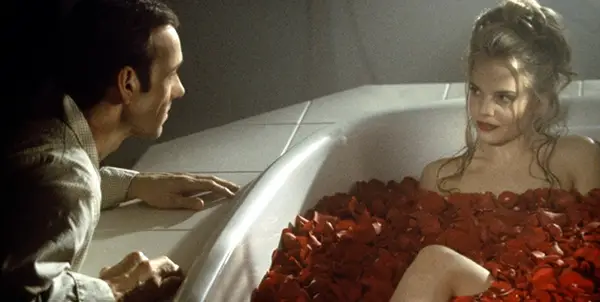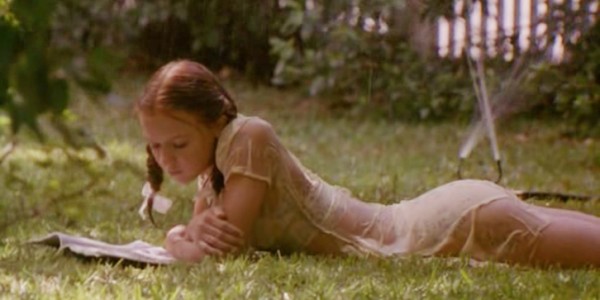Is The Nymphet Wrongly Held Accountable In The Age-Gap Film?

I'm a British, twenty-one year old aspiring film writer and…
In cinema, age-gap relationships have been forever on display, from Humphrey Bogart and Lauren Bacall to those seen throughout Woody Allen’s cinematic adventures (including his most recent Magic in the Moonlight). The age-gap relationship often takes the form of an older man and a younger girl, though there are the exceptions (take a look at The Graduate). Aside from the problematic conventions of the leading men ageing and the women remaining youthful in looks and spirit, the age-gap film poses questions about sexuality that mainstream Hollywood often shies away from.
The relevance in exploring subversive sexuality in the age-gap film impacts how we view the characters themselves. In films such as Lolita, the villain and victim lines are blurred with the precocious and sexually advanced way that Dolores Haze is portrayed.
Does Lolita place too much blame on Dolores?
So, how does the age-gap film position female sexuality in relation to blame? The easy answer is from the perspective of the older men, which only serves to help shift any fault from the adult to the child. In Vladimir Nabokov’s novel, the story is presented from Humbert’s perspective and presents the idea that he is simply a victim of his afflictions. Lolita had previously been adapted to screen in 1962 by Stanley Kubrick; however, the film lacked the more sinister aspects of the novel and of the illegality between Dolores Haze and Humbert.
In Adrian Lyne’s 1997 adaptation, Dolores Haze is portrayed as a sexually mature adolescent, who is not only interested in sexual activities but often encourages it from numerous people. The sexual contact between Dolores and Humbert is often initiated by her – from their first kiss before Dolores leaves for camp, to their second kiss when Humbert collects her from camp, and finally to their first sexual intercourse.
In this scene, Dolores is portrayed to be holding the cards, and is the dominant one in their relationship. Mirroring their first kissing scene, Dolores removes her retainer; where the previous time she did this it was paired with childlike excitement and playfulness, here it is paired with seductiveness. It’s important to note that Humbert is willing but not encouraging her, and that these sexual acts are an exploration of Dolores’s sexual freewill.

As their relationship intensifies, the depiction of their sexual relationship becomes even more eroticized by Adrian Lyne, as his adaptation features a scene in which Dolores sits on Humbert’s lap reading a comic. She is at first like a child, but it soon progresses into arousal. Her somewhat willingness to participate in Humbert’s sexual desires is one that is regarded as the most problematic, as she wasn’t a virgin before her encounter with Humbert and there is never any force in the initial stages by Humbert.
Is Humbert really innocent, though?
It is extremely clear that Humbert is a perpetrator of this young girl, and that his aim is to marry her mother in order to gain access to her child. What is also clear, though, is the sympathetic view that we, as an audience, are supposed to have for him. Not only are we given a short back story and a possible reason for his love of young girls, but the film also attempts to depict Dolores as manipulative without reason.
She is shown to use Humbert’s desires to benefit her own, purposely arousing him so he has no choice but to succumb to her demand of a higher allowance. What is evident in this scene is the notion that Dolores enjoys the hopelessness that Humbert often displays in her presence. Dolores’s sexual desires have shifted from playfulness and childlike curiosity that were expressed in the beginning to finally seducing him for her own satisfaction.
The ‘real’ villain of the film takes the form of play writer Clare Quilty, the ominous figure that taunts Humbert. Dolores’s relationship with Quilty is one far darker than the one that she engages in with Humbert. With Quilty, Dolores is subjected to pornographic films and sexual activities with other children and men. Positioning Quilty as the opposite of Humbert only reinforces Humbert as a victim.
This placement of the ‘blame’ onto the younger girl is not only present in Lolita. American Beauty adopts the same ideology in Angela Hayes, who portrays herself as overtly sexual. The film allows Lester to fantasize over Angela at her own wishes.

Her adoration and flattery of being looked at and lusted after only enhances the idea that sexually precocious girls want this kind of attention. Despite the illegalities of the relationships in both films, the two girls are depicted to be wanting the relationship to happen and continue.
The Lolita Effect
What’s apparent is that many young girls idolize and emulate Dolores Haze (among other characters deemed nymphets), and the reason is not solely due to her relationships with older men (though that is aim), but also because of her attitude, her spirit for life and adventure, her fashion style, and her overall demeanour. If you look on social blogging sites such as tumblr, you are bombarded with sites dedicated to both film adaptations and the original novel. These blog titles are often named after Dolores herself, such as Lolita Sweeta (a reference to Kubrick’s adaptation), or names inspired by what Humbert calls nymphets.
There are blogs dedicated to ‘nymphet fashion,’ as well as blogs dedicated to older-men and younger girl relationships. It is even seen in music, such as that of Lana Del Rey, who uses the motifs seen within Lolita throughout her songs, implicitly using quotes such as ‘light of my life, fire of my loins’ in Off to the Races along with a song titled Lolita. She also references the film Pretty Baby, and alludes to being available to older men.

This isn’t to say that characters such as Dolores and Angela Hayes shouldn’t be idolized, although it is interesting how dismissive people are over Dolores’s victim-hood. It’s clear that they detach Dolores from her relationship with men and refuse to associate her with the vindictive and destructive nature of Humbert. They want to be like her in attitude and style, yet fail to acknowledge the complexities of her character.
Ultimately, she is a young girl exploring her sexuality, and without a doubt is being mistreated and abused by Humbert and Quilty. Dolores is an extremely flawed character, with complexities that aren’t fully explored in the films – she does actively seek out sexual activity from Humbert and she goes to great lengths to be with the villainous Quilty, yet she is also the victim of pedophiles.
It’s just too easy to blame a kid
What we must not forget is that the initial dynamic between a child and adult is not inherently sexual on the surface, but paternal. And while Lolita combines both aspects (sexuality and fatherhood), it must be pointed out that while the child seems to encourage the adult, the adult does not need to be complicit in their corruption.
This idea is summed up in the film Hard Candy, where the character Hayley states: “She was only technically a girl, she acted like a woman.” She continues: “Just because a girl knows how to imitate a woman, does not mean she’s ready to do what a woman does! If a kid is experimenting and says something flirtatious, you ignore it, you don’t encourage it.”
Note that she is not denying that a child has the ability to develop sexual feelings at a young age, but she is also stating that no adult, especially one with immoral motives, should encourage a child’s sexuality. Lolita’s positioning of the audience through Dolores’s overt sexuality only proves that the blame easily falls to the child. After all, as Hayley points out: “It’s just so easy to blame a kid, isn’t it?”
The age-gap film narrative need not be focused solely on sexuality, but on a unique kind of friendship and understanding. They need not be manipulative, nor does pedophilia need to be eroticized (for example; Ghost World). Most of all, the genre has the ability to portray the very complex relationships between people of different generations.
See below for a short list of age-gap films you should see:
- An Education
- Fish Tank
- Lolita
- Pretty Baby
- Ginger and Rosa
- Lost in Translation
- Manhattan
- Some Velvet Morning
- Ghost World
- Baby Doll.
Do you think films like Lolita place too much blame on the younger girl? Feel free to comment with some other age-gap films that you can think of.
(top image source – Lolita (1997): The Samuel Goldwyn Company)
Does content like this matter to you?
Become a Member and support film journalism. Unlock access to all of Film Inquiry`s great articles. Join a community of like-minded readers who are passionate about cinema - get access to our private members Network, give back to independent filmmakers, and more.
I'm a British, twenty-one year old aspiring film writer and film maker. My focus of study is sexuality and gender in contemporary cinema.












